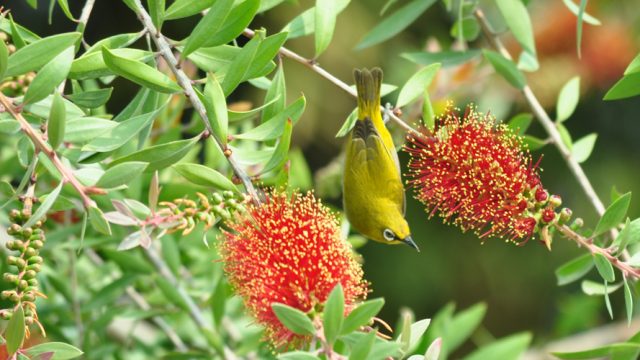As I take the winding road from my villa at the Golden Tusk Resort to the reception area, a classroom of birds erupts noisily. At six a.m. the sound, unlike the schoolkid variety, is not altogether undesirable. It helps rid me of residual drowsiness.
I climb into a waiting Gypsy and the guide, Suresh, tells me we’re going to spot much more than just the tigers of Corbett National Park. ‘You’ll see the tigers if they want to be seen,’ he says. ‘But keep your eyes open.’ It’s natural for people to expect to see tigers on their first safari but you need to remember that you’re simply a guest in pure animal territory.
The Park is divided into six eco-tourism sections. The resort is a stone’s throw away from the Jhirna zone located at the southern edge of the national park, open through the year. As our ID’s are verified at the guard post, I rent a pair of binoculars for the ride.

The Gypsy enters Jhirna and veers off the asphalt road into jungle territory, Suresh shouts for the driver to stop. He points to a massive tree. Perched on a high branch is a changeable hawk-eagle pecking away at a smaller bird gripped in its talons. Through the binocular lens, I stare directly at him breakfasting and never once does he break eye-contact.

Our jeep enters the tall grass and birds of startling variety and colours fly out of the green. Chestnut-headed bee-eaters, oriental magpie-robins, scaly-breasted munias, yellow-bellied prinias and pied bush chats weave their way over us as we drive on. A long-tailed shrike sits pompously on a high branch staring at us and then dives into the tall grass. We enter a clearing where a safari the previous day had spotted a tigress and her cubs.

The Gypsy comes to a halt and Suresh is examining the ground. ‘Fresh pug marks,’ he says. I notice the mud is damp implying a tiger had walked past a few hours ago. I scan the area with my binoculars but there’s nothing to be seen except for the head of a deer that disappears before I could even be sure it was there.

We drive on and reach a four-storied watchtower. The view from the top is that of a painting where the clouds of dawn are slowly lifting, displaying Corbett in all its lush beauty. Straight ahead, at a distance of about eight hundred metres, two elephants are feasting in the tall grass. They look like black rocks with eyes and even through the lens, their size helps puts things in perspective.
From the watchtower we drive to a dry riverbed. The long-winding trench has a group of monkeys on the other side looking suspiciously at us. This seems to be a common waiting area for safaris, and sight-seers whip out their camera phones to click photographs of themselves. Their laughter and conversation driving even the smallest animals away and I’m happy when it’s time for our Gypsy to depart. The beauty of a safari lies in the lull of conversation and the subsequent heightening of the visual sense. The surprises that Mother Nature puts on display here are best enjoyed in silence.
We pass an electrified area housing the forest guard post and I wonder if this could be the most exciting and dangerous job at the same time. A row of eucalyptus trees rise up ahead and we pass an anthill the size of our jeep. The thick foliage allows sunlight to drip through, illuminating rows of wildflower bushes. The sounds deep in the jungle are simply conversations happening overhead and I find myself forgetting about everything else as I explore the region.

As we make our way out of the tall grass and back onto the asphalt road, Suresh asks me if I’m disheartened about not seeing a tiger. ‘I’m not,’ I reply. And that’s the truth. I realised a Corbett safari isn’t a zoo. You get a front-seat view of the jungle and its inhabitants without disrupting their way of life. These animals are lucky enough to be living in their natural habitat while so many of their kind suffer through deforestation all around the world.

As we drive towards the Jhirna exit, a spotted deer darts out a hundred metres ahead of us. It lunges into the tall grass opposite and disappears giving me just enough time to whip out my camera. A tiny Oriental white-eye with its canary yellow plumage follows after it. As I turn back and look out at the vast expanse of the jungle, black shouldered kites circle in the clear sky above. I sit back happy and contended with the Corbett experience. I may not have seen a tiger this time, but I got more than a passing acquaintance with his neighbours. There’s no way I’m not coming back here.





